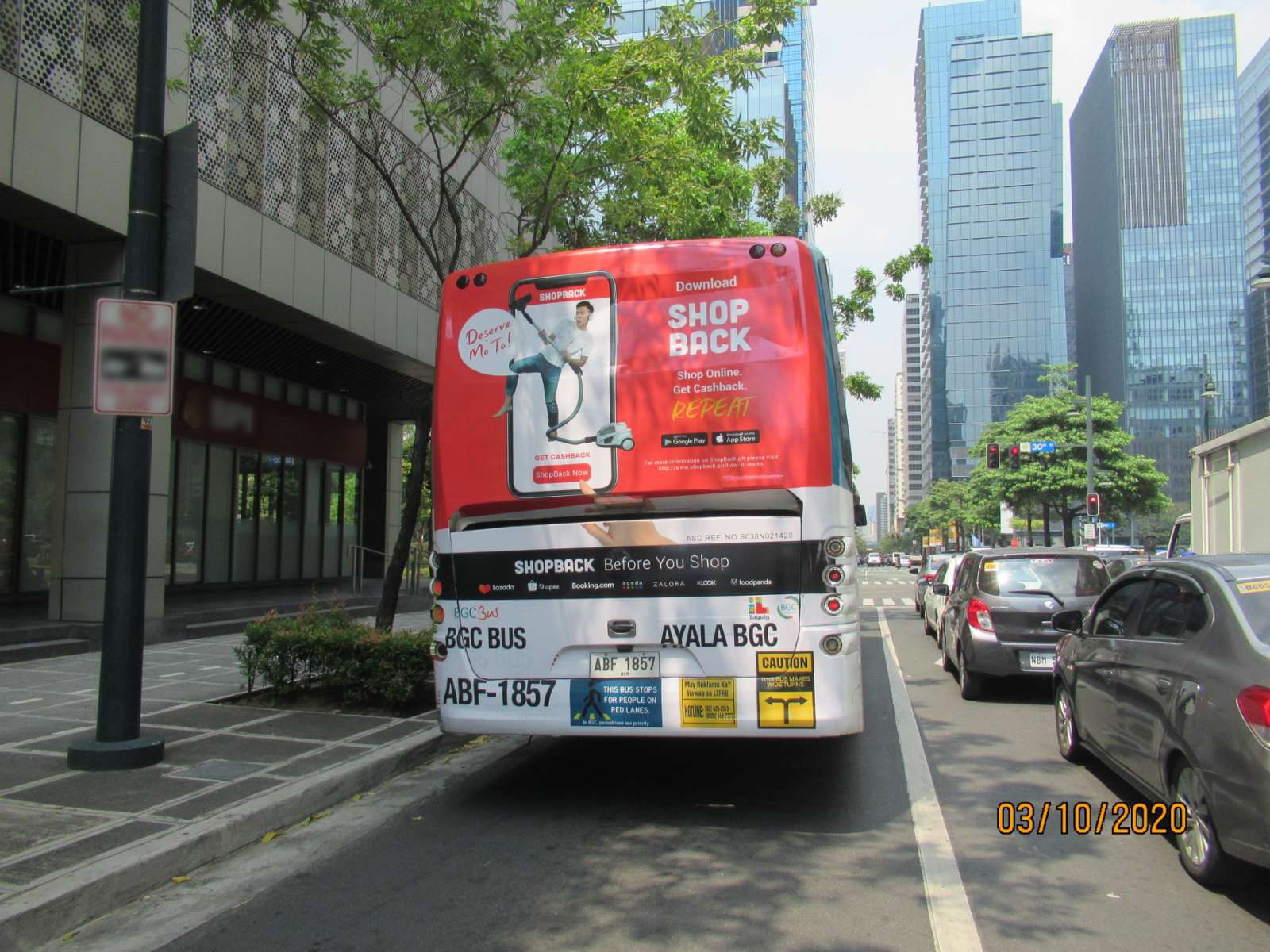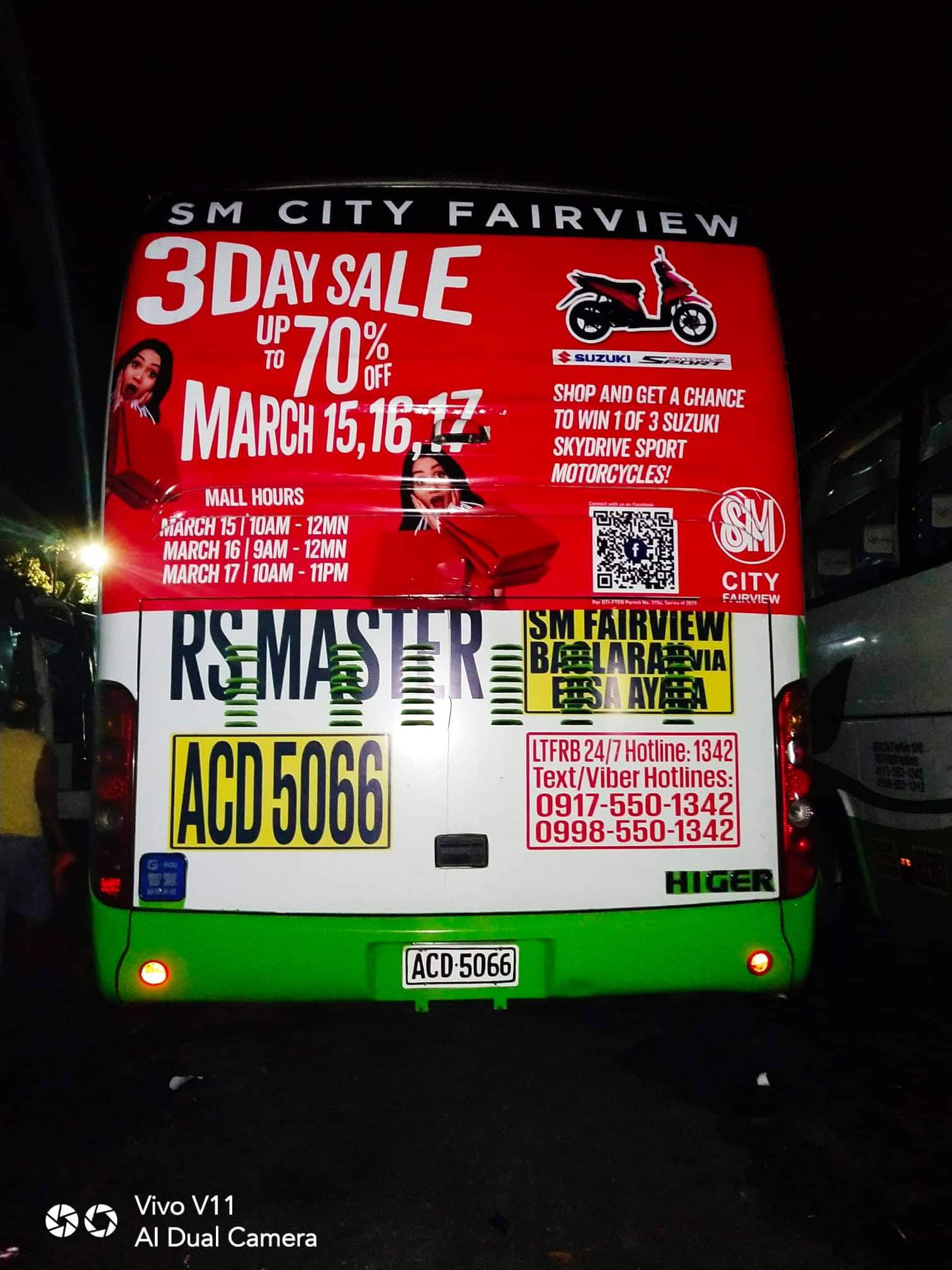Transit Advertising Philippines for Unmatched Brand Presence
Transit Advertising Philippines for Unmatched Brand Presence
Blog Article
Recognizing the Role of Transportation Advertising And Marketing in Enhancing Brand Exposure and Consumer Interaction
Transportation advertising has become a pivotal component in the advertising landscape, using unique chances for brand names to boost their visibility and engage customers properly. With the ability to reach a varied and restricted audience throughout their day-to-day commutes, these advertising methods are not simply regarding presence; they are about producing significant links with possible consumers. As we explore the diverse advantages and cutting-edge strategies within transportation advertising, it becomes important to think about just how these components jointly affect customer assumption and actions, questioning regarding their long-lasting effect on brand name commitment.
Interpretation of Transportation Marketing
Transit advertising refers to the method of promoting items, services, or brands with advertisements placed around mass transit systems. This kind of advertising and marketing incorporates a range of placements, consisting of posters on trains and buses, digital displays at transportation stations, and wraps on the outside of lorries. It intends to reach a diverse target market, capitalizing on the high foot website traffic connected with public transit.
Transportation marketing is strategically positioned to capture the focus of commuters, that usually invest considerable time traveling or waiting. By incorporating ads into the everyday routines of people, brand names can produce a lasting perception and foster brand acknowledgment. The tool is especially reliable in city settings, where public transport is a key setting of travel.
In addition, transportation advertising and marketing can promote localized targeting, enabling businesses to reach particular demographics based upon transit paths and station areas. As metropolitan populaces expand and making use of public transportation increases, this marketing approach has gotten prestige as an important part of incorporated advertising strategies. The dynamic nature of transportation advertising, incorporated with its ability to engage consumers in a restricted setting, underscores its importance in modern marketing methods.
Advantages of Transportation Advertising And Marketing
The effectiveness of transit advertising and marketing hinges on its capability to provide a plethora of advantages to brand names looking for to boost visibility and interaction. One of the main benefits is the substantial reach it supplies; transportation advertisements can properly target varied demographics throughout city locations, getting to both travelers and pedestrians alike. This broad exposure significantly improves brand name understanding.
An additional benefit is the high regularity of impacts. As transportation lorries take a trip along well-known courses and quit at several locations, they produce recurring direct exposure that enhances brand name messages. This frequency fosters experience, which is important in consumer decision-making.
Transit advertising is additionally cost-efficient contrasted to other media systems. Given its expansive reach and possibility for high impacts, brands frequently experience a reduced price per thousand impacts (CPM), maximizing their marketing budget.
Moreover, transportation ads can develop a feeling of community link. By lining up with local transportation systems, brands can resonate with regional target markets and promote a feeling of regional pride. This local method enhances brand commitment and interaction, making transportation marketing a compelling selection for businesses intending to solidify their visibility in the marketplace.

Efficient Techniques for Transit Campaigns
To maximize the influence of transit campaigns, brand names ought to leverage critical planning and implementation customized to their target audience. Initially, identifying the market characteristics of the target market making use of public transit is critical. This allows brand names to develop customized messaging that resonates with potential clients.
Next, choosing the appropriate transportation tools is vital. Whether utilizing bus wraps, metro posters, or digital screens, each tool has special benefits that can improve exposure. For example, vibrant visuals on bus covers can bring in focus, while electronic ads can be updated often to reflect prompt promos.
Moreover, integrating a natural branding technique throughout transportation systems guarantees consistency and reinforces the brand's identity. Utilizing eye-catching styles and unforgettable taglines will certainly strengthen brand recall amongst commuters.
By using these techniques, brand names can properly harness the potential of transportation advertising, cultivating greater awareness and link with their target audience. Inevitably, a well-executed transportation project can drive significant development in brand name presence and consumer involvement.

Determining Impact and Interaction
In assessing the performance of transit ad campaign, exact measurement of impact and engagement is crucial for brand names looking for to maximize their advertising try this and marketing methods. Metrics such Extra resources as reach, regularity, and perceptions supply foundational information to analyze presence. Analyzing these variables assists establish just how numerous prospective clients are revealed to the advertisements throughout their everyday commutes.
Engagement can be more determined via consumer interactions, such as site traffic, social media mentions, and direct responses to calls-to-action included in the ads. Utilizing devices like QR codes or unique URLs can assist in monitoring of consumer behavior directly linked to transportation projects. Studies and responses devices likewise offer as valuable methods to collect qualitative information on customer assumptions and recall of the ad.
Moreover, progressed analytics and attribution versions can correlate transit exposure with succeeding acquiring actions, providing understandings into the roi. By using a comprehensive approach that integrates qualitative and measurable measures, brand names can establish a nuanced understanding of their transportation marketing influence. Eventually, this data-driven method makes it possible for brand names to improve their campaigns, ensuring they reverberate effectively with target market and improve general brand visibility.
Case Studies of Effective Projects
Effective transportation marketing projects work as compelling examples of how effective strategies can elevate brand visibility and interaction. Transit Advertising Philippines. One significant instance is the "I Love New york city" project, which changed the city's image and brought in numerous tourists. By utilizing subway ads, signboards, and bus wraps, the campaign created a solid, cohesive brand identification, causing a substantial uptick in tourism and neighborhood business patronage
One more exemplary campaign is Coca-Cola's "Share a Coke" campaign, which leveraged transit advertising and marketing to individualize the brand experience. By featuring preferred names on promotional products throughout different transit platforms, Coca-Cola cultivated a deeper emotional link with customers, urging them to share their experiences on social networks.
Additionally, the "Got Milk?" project effectively utilized mass transit advertisements to get to a broad audience, reinforcing the message of the significance of milk in a well balanced diet plan. The project saw a quantifiable increase in milk intake in target demographics.
These situation researches show that when performed thoughtfully, transportation advertising and Full Report marketing can dramatically improve brand presence, foster customer interaction, and drive quantifiable outcomes, demonstrating its important role in modern advertising approaches. - Transit Advertising Philippines
Verdict
In verdict, transit advertising and marketing serves as an essential tool for boosting brand name presence and fostering customer involvement. Inevitably, the ability to determine involvement and assess effective situation studies underscores the effectiveness of transportation advertising in driving brand commitment and consumer interactions.
Transit marketing has arised as an essential element in the advertising landscape, offering special possibilities for brands to boost their visibility and engage consumers efficiently.In addition, transit marketing can facilitate localized targeting, permitting companies to reach specific demographics based on transportation routes and terminal locations.In evaluating the effectiveness of transportation advertising projects, exact measurement of effect and involvement is essential for brands looking for to optimize their advertising and marketing approaches.Successful transportation advertising projects serve as engaging instances of exactly how effective strategies can elevate brand name presence and engagement.In conclusion, transit advertising offers as a vital device for improving brand presence and fostering customer interaction.
Report this page